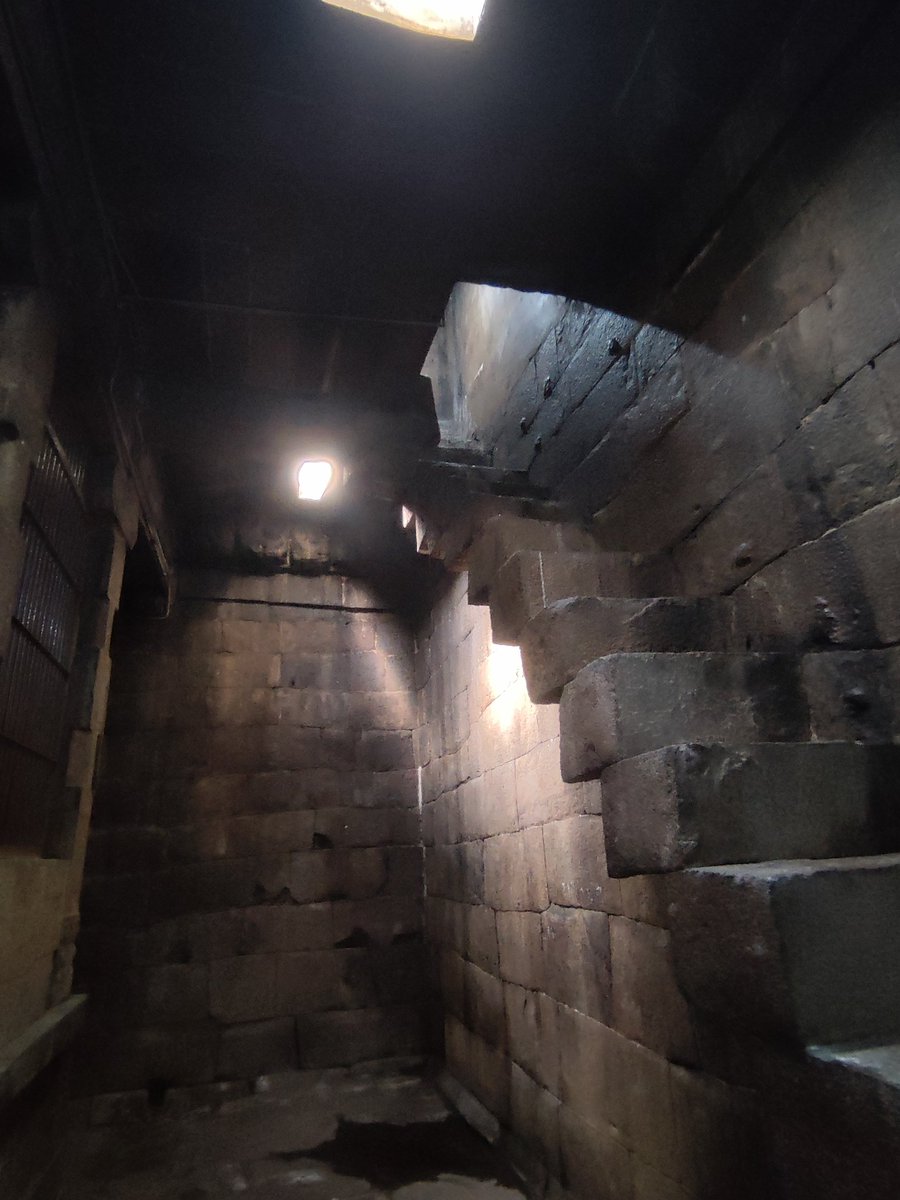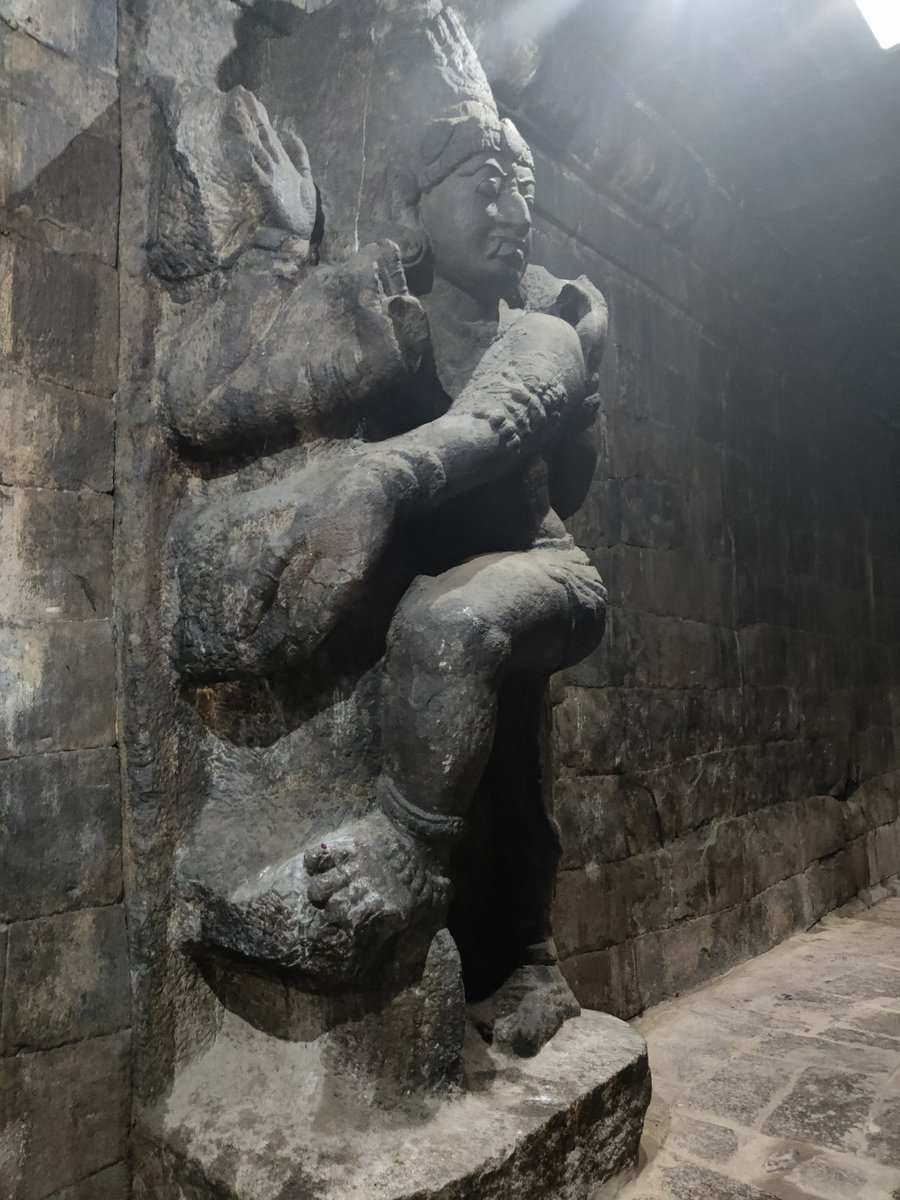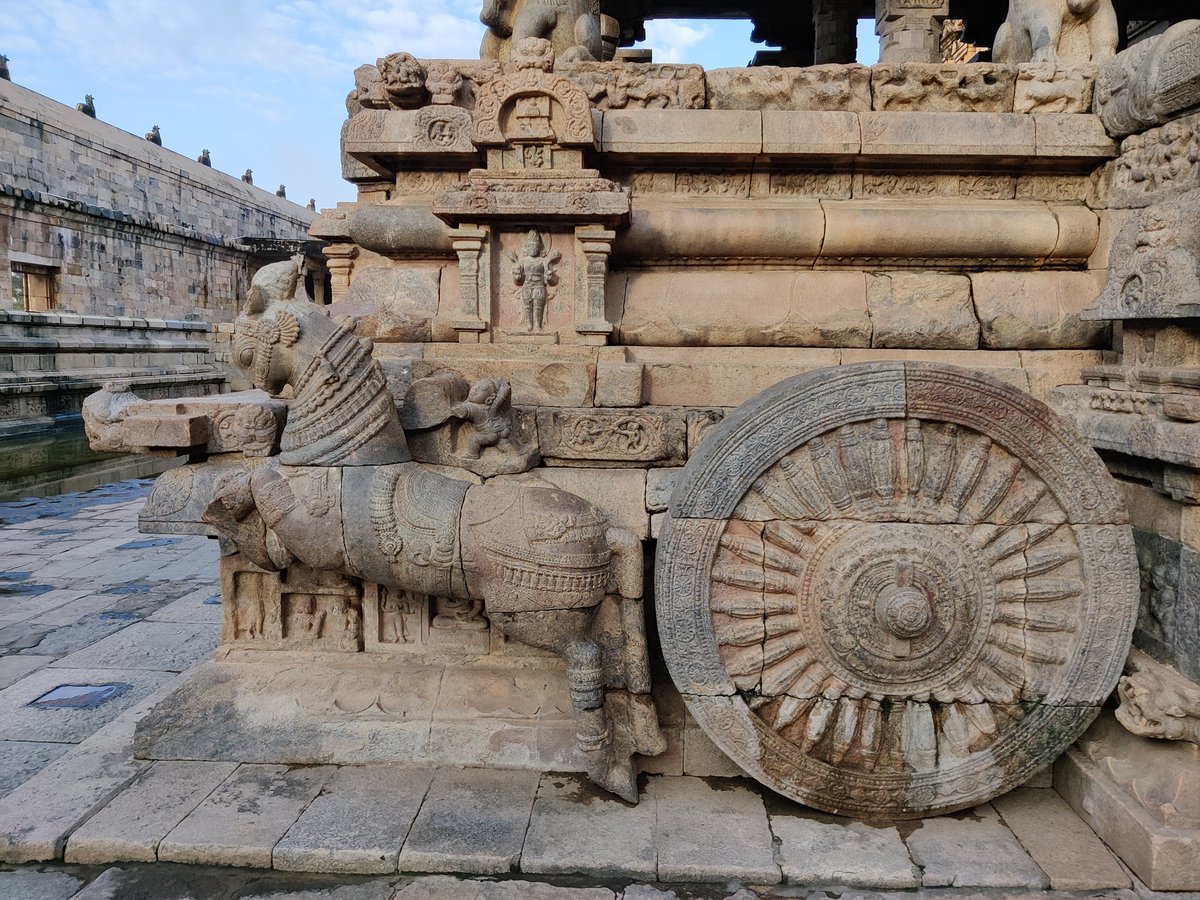
On the left is a Sivalinga - the square base represents Brahma the octagon Vishnu (both are unseen when installed ). The cholas tried to do that by creating an inner and outer corridor and aligning the stones to create a progression in the vimana. In the brahadeeswara at 



the octagon was not acheived tapering squares leading to a circle (better viewed from inside at different levels). They achieved it in GKC... So the look of the tapering structure from outside. Inside each level is a transition from the square to an octagon to a circle. The
taper that u see in gkc is because of the additional attemtpt to get the vishnu piece in. This leads to the comparison that Brh is a male structure while GKC is a more feminine grace structure. When you look from the outside it would appear that the vimana is filled in. It's not 

It's hollow and can be viewed by climbing up the stairs to the second and third levels (restricted) through a hole in the ceiling of the moolastAnam the praNava and mantras are meant to reach the kalaSa and come back down. There indeed is a great echo effect 



We talked about light from the nandi but what about temperature - the floor of the sanctum in GKC haa a unique chandrakantha stone - the sanctum is cool in summer but warm post monsoon (was indeed warm a few feet from the peruvudayar. 



• • •
Missing some Tweet in this thread? You can try to
force a refresh





























